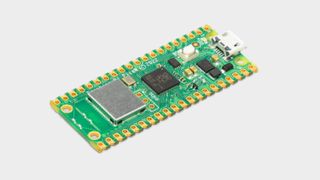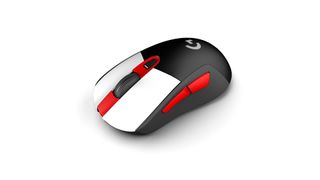The Raspberry Pi Pico W brings wireless functionality to this tiny computer
So many new internet connected possibilities.

When you think back to the early days of electronic computing with rooms full of house sized units to do what we'd now consider fairly basic tasks, tiny cheap computers are nothing short of amazing. Sure, we live in an age where everyone has a super beast in their pocket that can do miraculous things. But these often tend to cost hundreds or thousands of dollars.
Not like the Raspberry Pi Pico, which is famously a 21mm x 51mm card sized computer you can buy with spare change. Though this little hobbyist machine has just had a significant upgrade, and with that a 50% price increase. The regular Raspberry Pi also had its first price increase thanks to the chip shortage, so it's no surprise that others may also go up.
This all of course sounds a lot more significant until you remember we're making a small hop from $4 to $6.
The $2 extra is well worth it as it adds Wi-Fi support to to the teeny tiny device, which has been called the Pico W. This might not be a big deal for many projects, but according to the Tom's Hardware review, the addition of Wi-Fi seems to be just what the Pico needed. Especially when using the board with sensors as the data can be easily transferred over a network without much extra effort on the part of the user.
Other than that, there aren't any notable changes to the Pico board, which means it's very similar to this one running a Gameboy style game. The Pico is a great little project device, and the $2 upgrade may only bring Wi-Fi but it's already seeming very useful. Plus when asked by The Register, Raspberry Pi CEO Eben Upton explained that most of that price hike went straight to incorporating the new feature.

Best gaming mouse: the top rodents for gaming
Best gaming keyboard: your PC's best friend...
Best gaming headset: don't ignore in-game audio
"Broadly speaking it represents the cost of the wireless modem and associated RF components (everything under the can.)" said Upton about the extra $2. "Some cost increase can be attributed to the PCB (jumps from 2 to 4 layers) and the PMIC on the chip (higher current design to supply both RP2040 and the Wi-Fi chip.)"
If you've been looking for a project that needs a microcontroller, and one that's incredibly lightweight and Wi-Fi friendly, the Pico W seems like a great choice. It's not bogged down with unnecessary software like an OS or anything silly like that. Though it probably doesn't overclock quite as well as the standard Raspberry Pi.
The biggest gaming news, reviews and hardware deals
Keep up to date with the most important stories and the best deals, as picked by the PC Gamer team.

Hope’s been writing about games for about a decade, starting out way back when on the Australian Nintendo fan site Vooks.net. Since then, she’s talked far too much about games and tech for publications such as Techlife, Byteside, IGN, and GameSpot. Of course there’s also here at PC Gamer, where she gets to indulge her inner hardware nerd with news and reviews. You can usually find Hope fawning over some art, tech, or likely a wonderful combination of them both and where relevant she’ll share them with you here. When she’s not writing about the amazing creations of others, she’s working on what she hopes will one day be her own. You can find her fictional chill out ambient far future sci-fi radio show/album/listening experience podcast right here. No, she’s not kidding.
Most Popular





